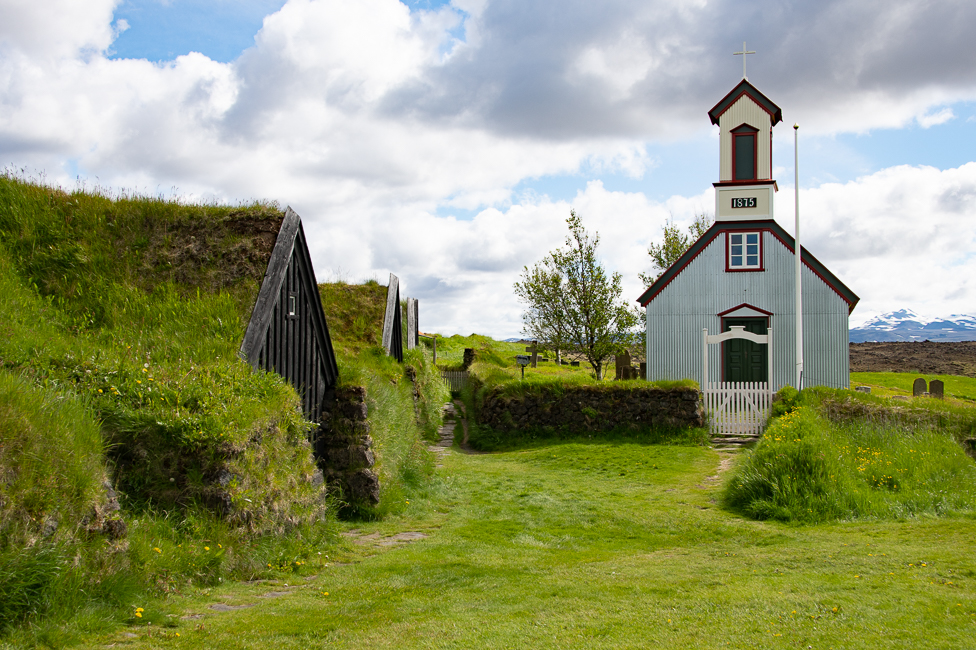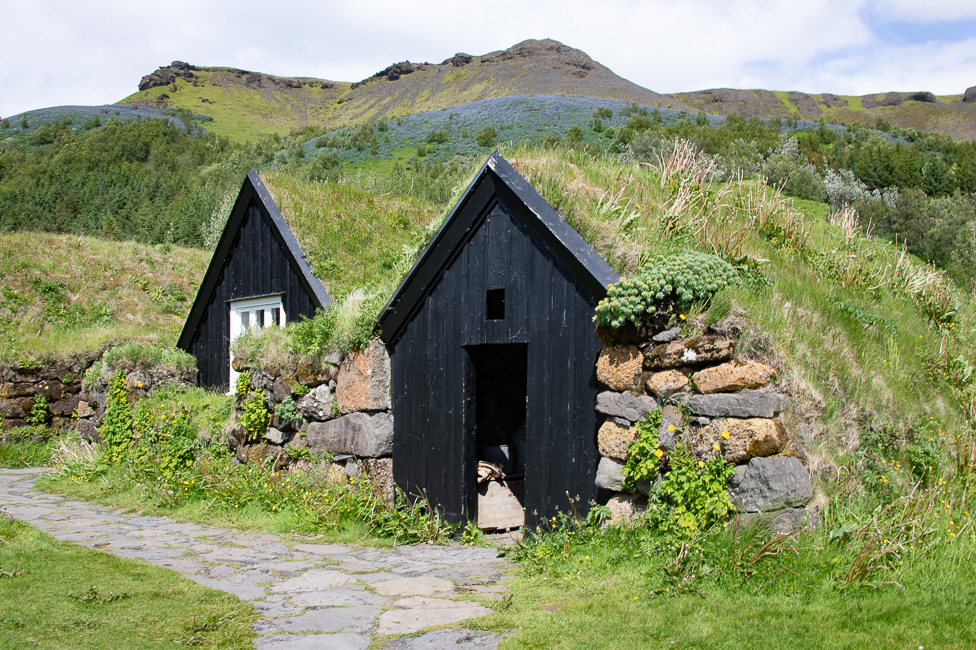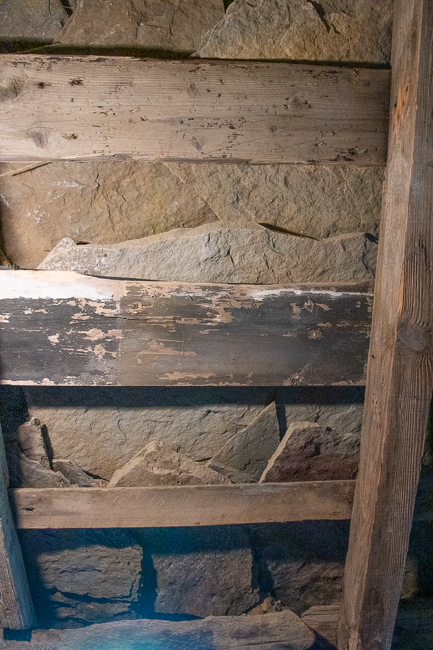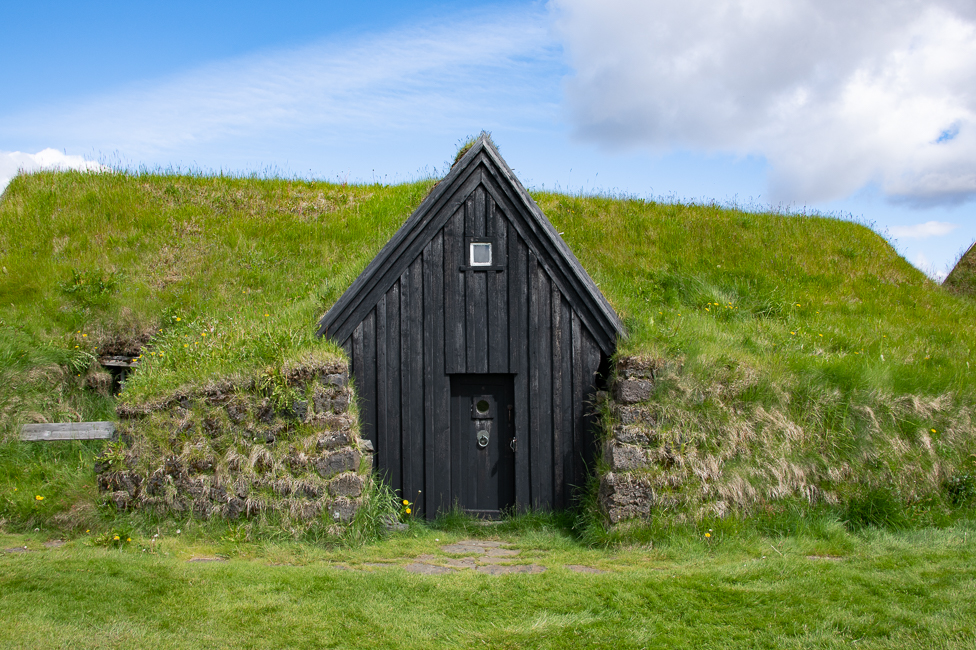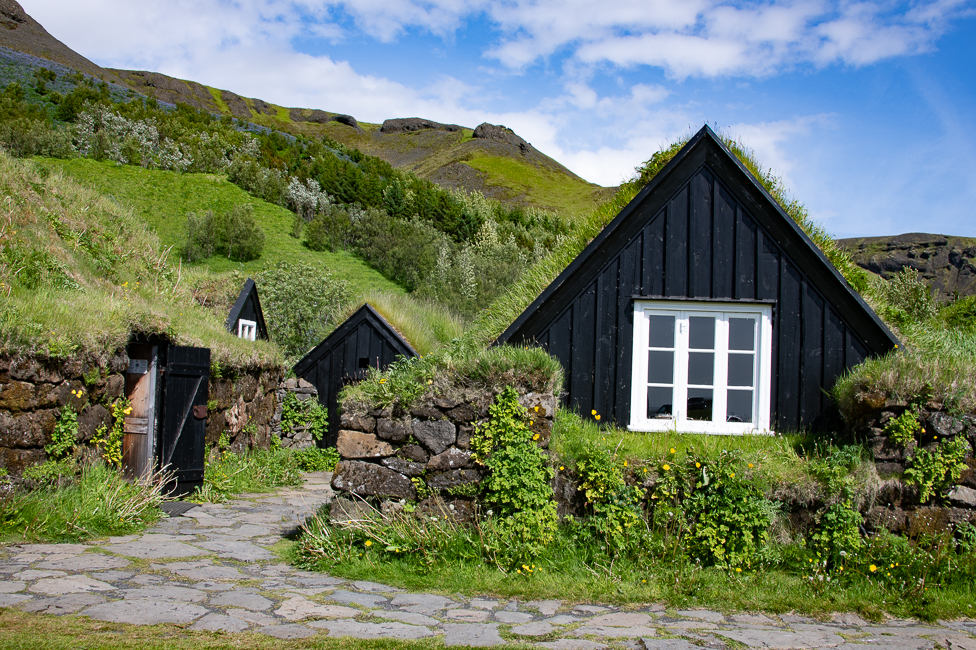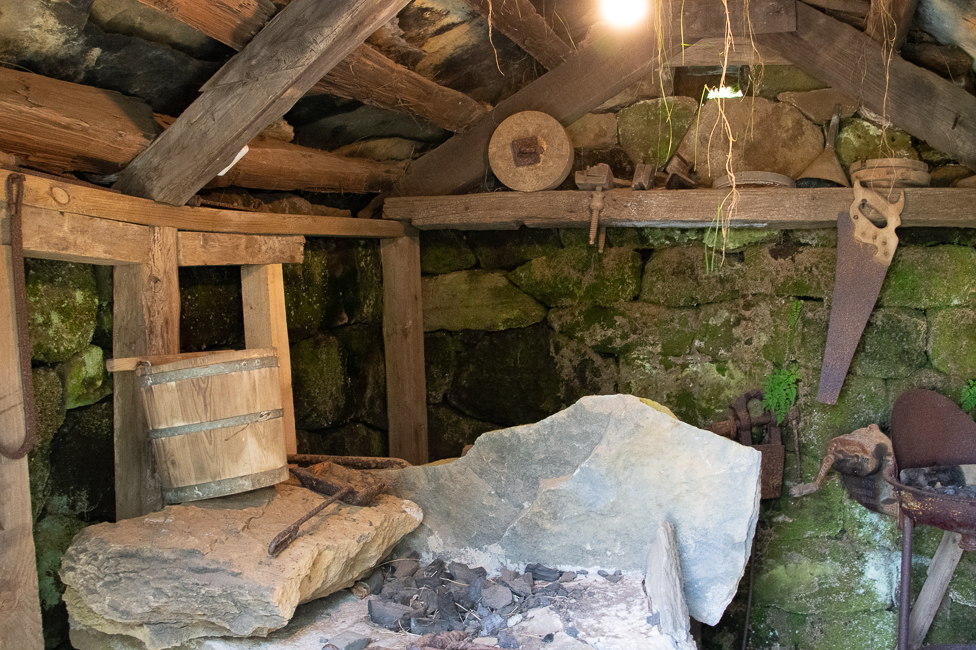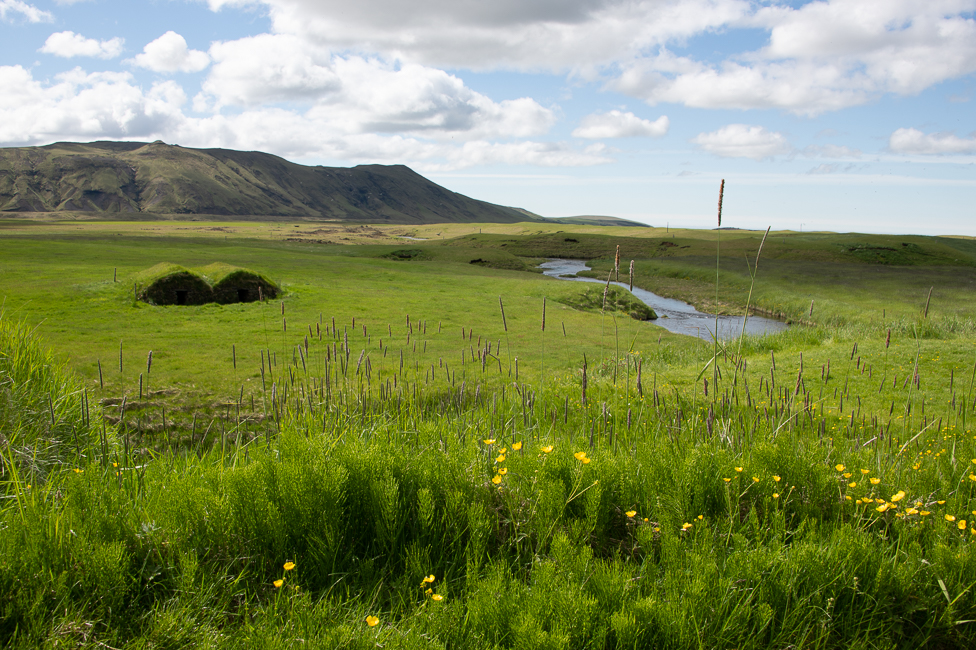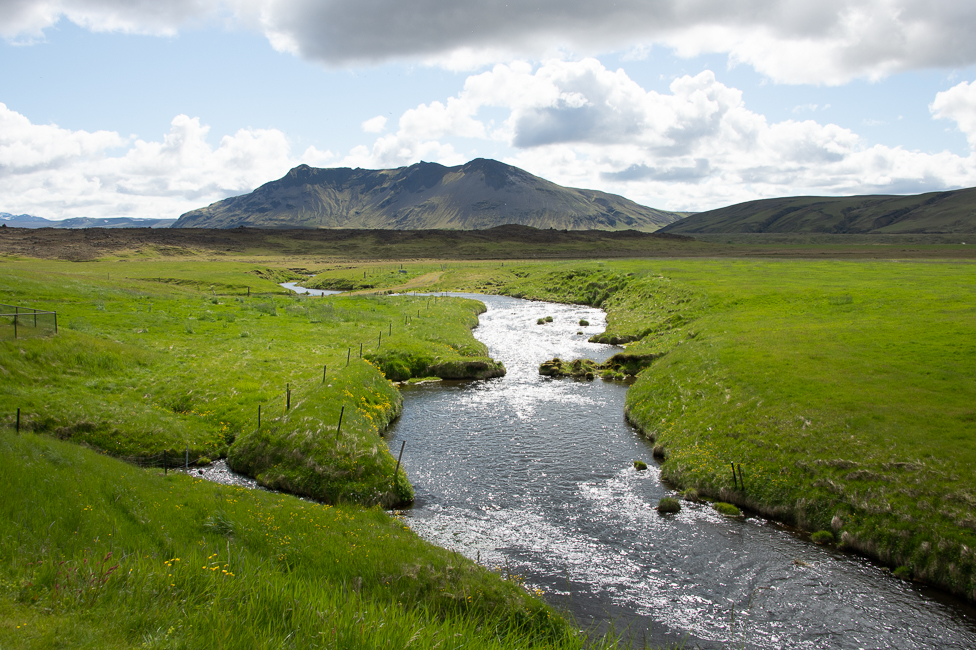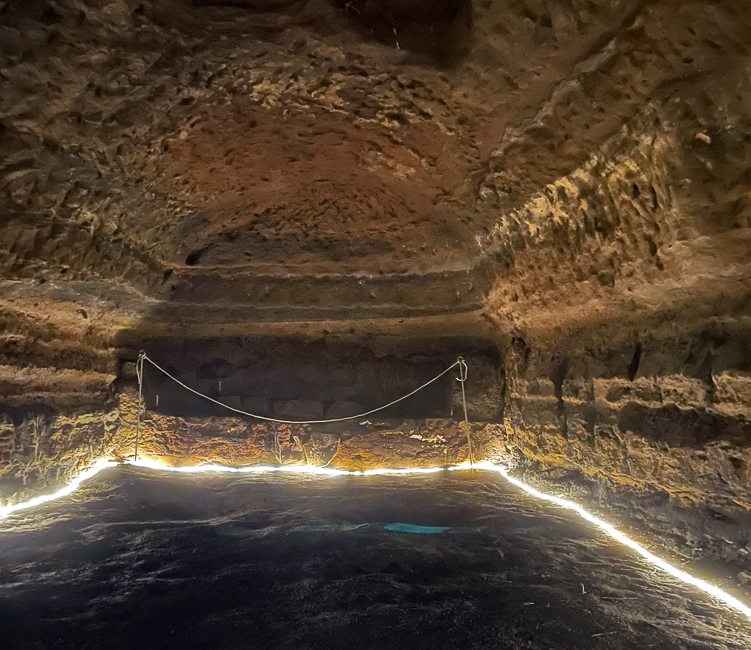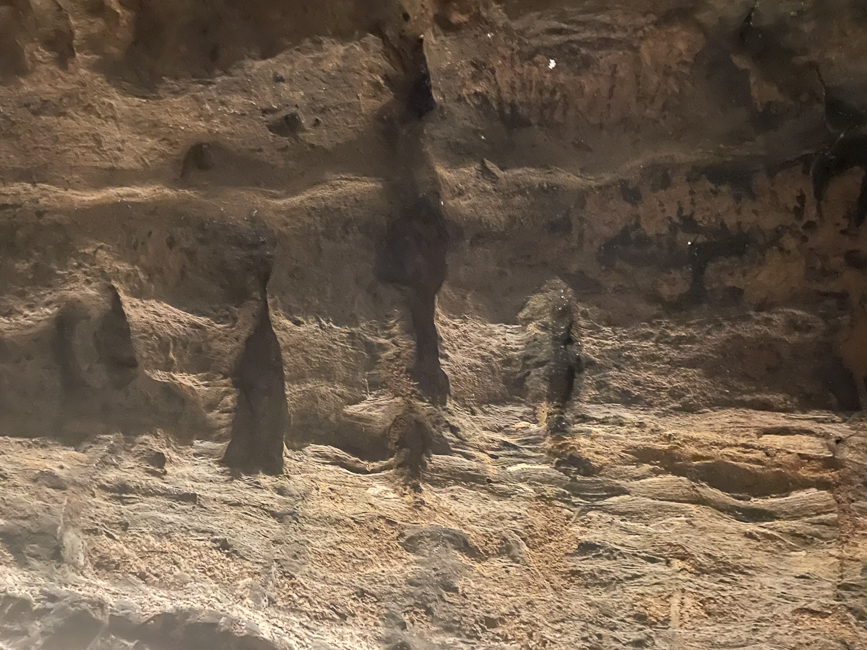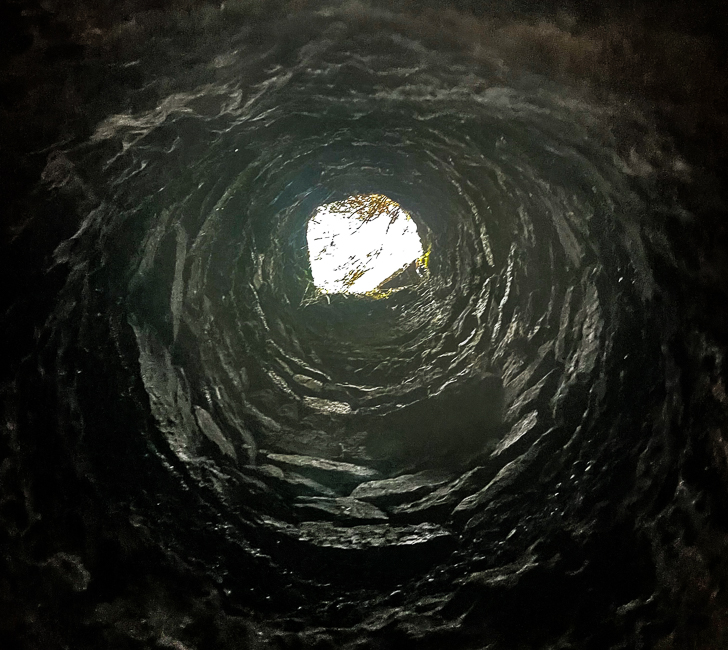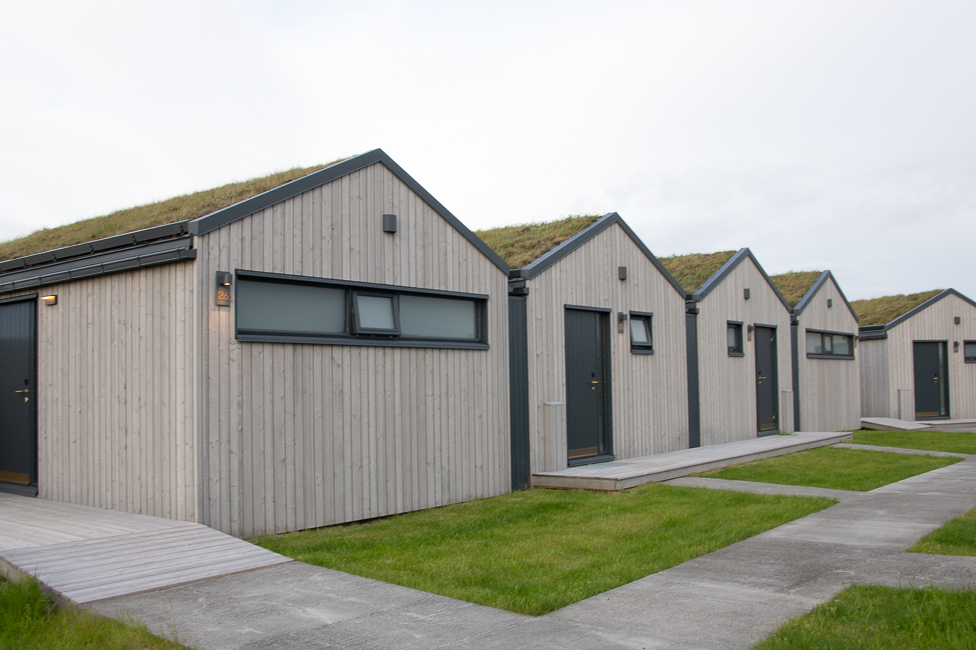June 2022
Iceland is overwhelming on so many levels. Driving the Ring Road, which is essentially circumnavigating the island, every 5 miles is different, and I am frankly, overwhelmed. I needed to begin this blog somewhere because if I wait to process all that is coming at me I won’t be able to do so until November. I am going to begin with something I can grasp, and something I fell madly in love with and that is the Turf Houses.
Most of the turf houses that are in good shape are now restored and protected by the government. You will see ruins as you drive, but the following are some that are in good shape.
As you visit different sites, you can see how the techniques have evolved, but the materials are pretty much the same.
Most turf houses have a wooden frame structure, with stone walls and a complete covering of turf.
There are areas of this island with no turf. If that was true in ancient times, I have no idea, but the turf houses I have seen tend to be found in very specific areas.
The turf is cut from the ground, and then, what they call mats, are stacked on top of each other with stones to form walls.
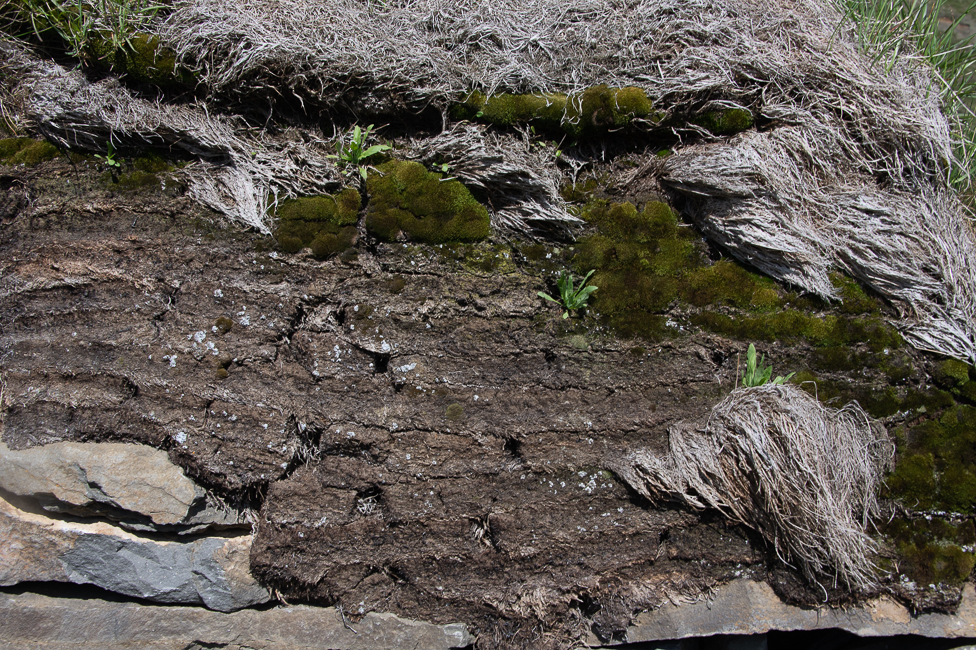 The roof is also made of turf and it was traditionally made waterproof with tree bark. The stone foundation prevents moisture from the ground rising up the wall, which helps prolong the lifespan of the structure.
The roof is also made of turf and it was traditionally made waterproof with tree bark. The stone foundation prevents moisture from the ground rising up the wall, which helps prolong the lifespan of the structure.
The first turf houses in Iceland consisted of one large space, and the design resembled longhouses built by Vikings in other countries.
While exterior walls were made of stones, sometimes there were light wooden interior walls that divided the space into two or three rooms.
Over time the design evolved into a series of smaller houses connected by a passageway. The houses, and I assume the families, would grow over time, and new “rooms” were added.
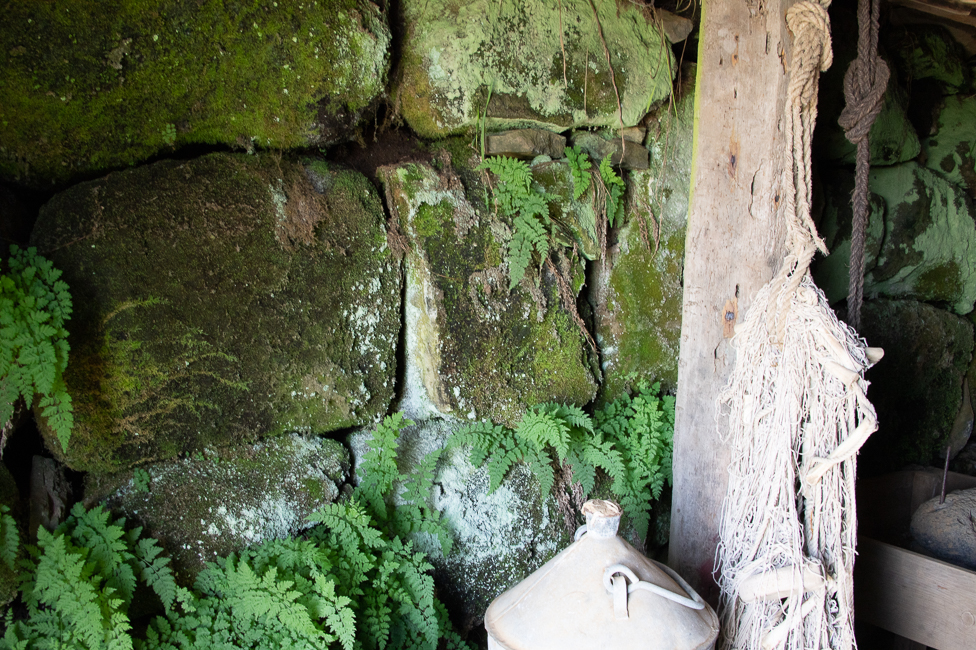
This was especially charming when the ferns began poking through the interior walls, something I am sure would never have been allowed when the homes were actually in use.
Since wood was very sparse on the island, most of the wood came mainly from driftwood, and most houses usually had some wooden parts.
Iceland is unique in its turf houses. This form of construction existed in Northern European countries and is much older than the settlement of Iceland. But in the European countries, they were only built by the poorest people. In Iceland, turf houses were common among all classes, which says something not only about their viability of construction but their sensibility of use in this extreme climate.
Pre-dating the turf houses were caves.
Twelve man-made sandstone caves have been discovered on the bank of the river Ytri-Ranga near the town of Hella. The historical site is Iceland’s oldest still-standing archaeological remains. Some believe the caves date even further back than the settlement by the Nordic Vikings. The caves were found in an area called Ægissíða, which is actually a farm. The name of the farm can be found in written sources from 1270.
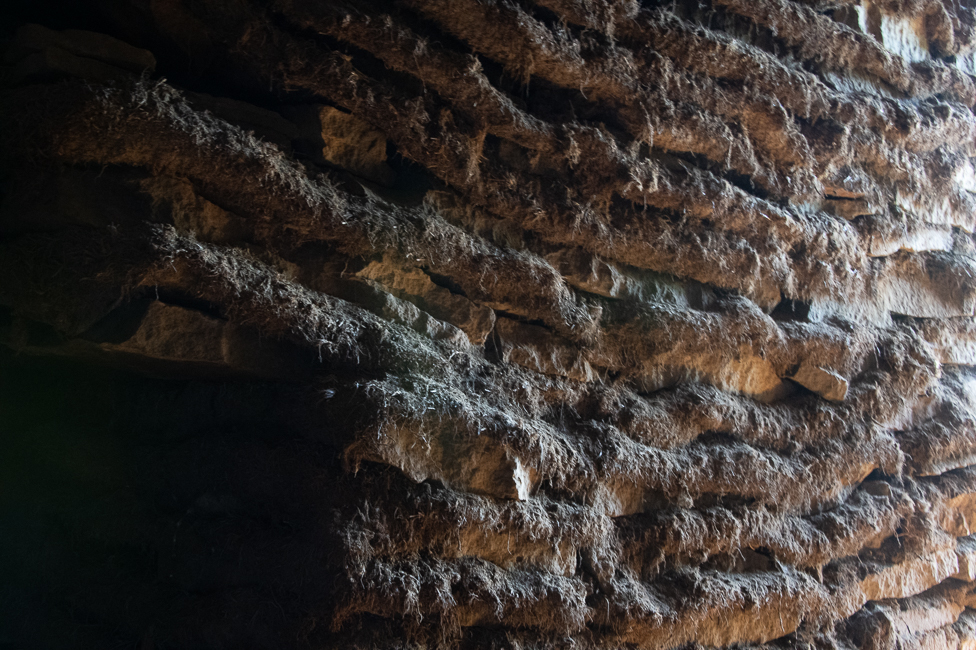
The stones that create the entryway are layered with turf and are critical to the structure of the entire cave
Over the centuries the caves have been used by Icelandic farmers as sheep sheds, barns, and food storage. And yet nobody knows for certain who made them and why. From the beginning, however, the people of Ægissíða have said the caves were built before the Viking settlement. Most likely by Celtic monks.
But there is no real way of knowing. Icelanders tend to hold onto tradition, so if it is not in the written history, essentially, it is not investigated or studied. It is sad, but that is politics. The caves, none-the-less are fascinating and the tour is extremely enlightening with a lot of humor thrown in.
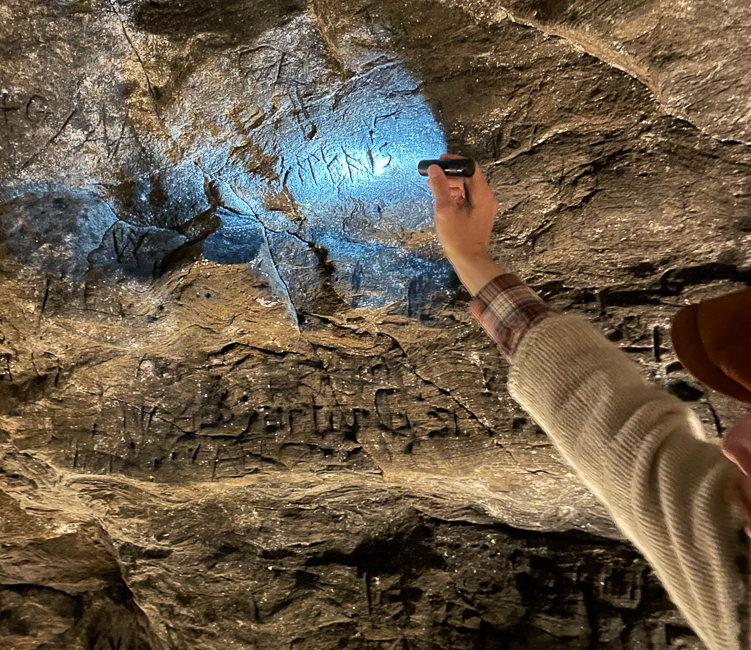
Runes have been found within the cave. It is possible there is also Ogham writing, but so many people over centuries have carved things into the walls that it is impossible to know for sure.
Staying at the Magma Hotel in Kirkjubæjarklaustur you can see how the concept of turf roofs is carried over into the present.
As I have mentioned, Iceland is simply overwhelming. It has history, geography, geology, and mother nature all competing for your attention. I hope to sort it out as I go along and bring you a coherent story, but for now, enjoy the turf houses and the caves that have no explanation but are a wonder.
